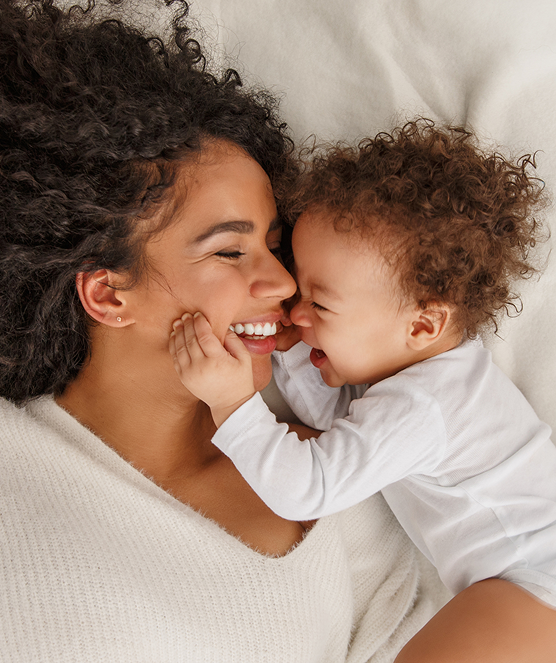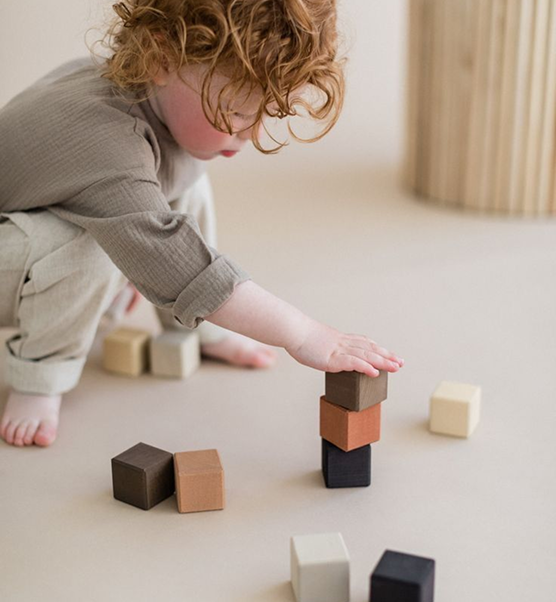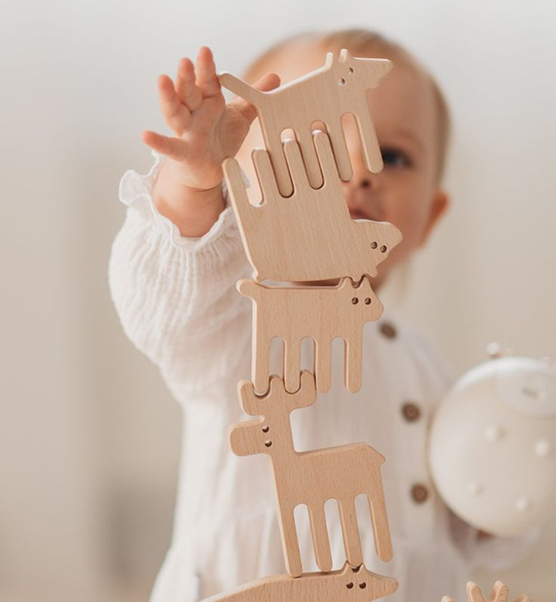Today, I’m talking to Miranda Featherstone about how we can talk to our kids about sex. This one is a good listen, or if you prefer reading the transcript is below!
Emily: Thank you so much for joining me. I’d love to ask you to just briefly introduce yourself before we get started.
Miranda: Cool. Thanks for having me. I am Miranda Featherstone. I’m a social worker and a writer. I do school-based counseling work with children and families. And over the years, I’ve worked with kids from preschool to high school. I write about parenting and families, among other subjects, and I teach sex ed. I also work with schools to create inclusive sexual health curricula that work for them.
Emily: Awesome. Okay. So I wanted to give some context for this conversation and why we are here. So last fall, I read a piece that you wrote in the New York Times about losing your mom. And at that time, my mom was also very ill and the piece really spoke to me, by which I mean that I was crying in my cereal. And then I found out you lived in Rhode Island, and I decided that I was making you my friend. So I invited you to have coffee with me with this excuse of talking to you about helping me in the newsletter on some of these issues, about how to talk to kids about these big, tough topics. And one output of that was that you wrote something really wonderful on talking to kids about death.
But we actually spent a lot of that conversation talking about kids and sex, or how to talk to kids about sex. And then when I sat down to try to think about writing about those things, I realized that I more or less just wanted people to be able to listen to that conversation. So I’m just trying to replicate our coffee conversation. So … great!
I think of this big underlying question as just, How can I discuss sex and where babies come from with my kids in a way that works for me and works for them? So that’s the big overarching starting point, but I actually want to be super-concrete to start. So, we’re in the car. My 3-year-old says, Mommy, how did the baby get in your tummy? And I want you to tell me what to say.
Miranda: I think, in terms of the questions you’re going to get, that’s a pretty easy one. You just say, “I have eggs in my body.” And you know, depending on your family situation, it’s a big assumption, but you might say, “Daddy has sperm in his body. And when you bring a sperm and an egg together, that makes something called an embryo, which grows into something called a fetus, which grows into something that is a baby! And then, when the baby is strong enough and big enough, it comes out.” That’s obviously very adjustable, right? Because sperm doesn’t have to come from daddy.
Emily: You can get it anywhere.
Miranda: Yeah, you really can! Yeah, I mean, I worked with an educator. She was very into [the] peanut-butter-and jelly metaphor. You can get peanut butter [in] lots of different places. I feel like that’s confusing, but the idea is right that these are two substances. Their origins are pretty flexible, but that’s what you need to make a baby.
Emily: Okay. So I think that’s great and that feels very doable. The piece that I struggled the most with, and I think many people I talk to struggle with, is the follow-up, which, to be fair, with the 3-year-old, mostly they just move on to PJ Masks or whatever. But eventually, even as your kid gets a little older, you get the follow-up of, “How do the sperm and the egg get together?” And I will say candidly, my approach to that went more with the science than the sex. And so more like, well, the egg … and the sperm swims … well, the meiosis, you know, and really going into that. And I think that leaves out this other piece, so that’s the part I find harder to navigate.
Miranda: Yeah, that is definitely harder to navigate. You are not alone in just really making it all about the biology. And I think that there are ages [where] that’s okay for a bit, but at some point you want your kids to know about sex.
Emily: Will I, Miranda? Will I want them to know about that?
Miranda: Well, because the culture is already talking to your kids about sex, and you are already sending your kids messages about sex. So you probably, to some extent, want to be in control of the actual narrative around sex. And it’s tricky, because, you know, I think my own philosophy of parenting is that a lot of it is about letting go of control, but that’s much easier to do if you’ve started out by laying a foundation of understanding. And I think a question that is really helpful to ask is, What do you want your kids to understand about sex, gender, sexuality, and your own values around those things?
So you do actually want them to know about sex, because you don’t want them to hear about it from that kid who’s in their class who’s going around telling everybody what a blow job is in second grade. You know, those kids are real, they’re out there, they exist! You are going to be better equipped to explain sex and sexuality to your kids than that kid.
Emily: I agree with that. I’m better than that kid. And I think the piece of this that, again, is hard — and I hear what you’re saying about trying to think about how it fits in with your family values — is the part of sex that’s about making a baby. The part of sex about, this is how mechanically the sperm gets in with the egg, is one thing that I think many of us are a little uncomfortable explaining to our kids.
But then the other piece of it — and you and I talked a lot about this in the first conversation, and I think you really changed how I was thinking about it — the second piece of it is the idea of sex, and not just penetrative vaginal sex but sex activities in general, as something that people do for fun. And I’d love you to just talk a little bit about how one navigates communicating that aspect of this in ways that are going to vary across families.
Miranda: Yeah, absolutely. Cory Silverberg does a really good job. Cory Silverberg, for your readers, is the author of a number of books for kids about sex and sexuality, and they do (Silverberg uses they/them pronouns) a really wonderful job of defining the three ways that our culture uses the word “sex.”
“Sex” is one way that we talk about whether someone is born with a vulva or a penis. “Sex” is one way that people make a baby — there are also other ways. And “sex” is something that people do to feel good in their bodies. And maybe to connect with other people. Helping kids to see that there’s this one very short word that means all those different things is really important. And I think that that’s an appropriate body of knowledge for elementary schoolers to be grappling with.
And the idea that sex is something that people do to feel good in their bodies — when you frame it like that, I don’t think that’s scary; I don’t think that’s intense; it’s not explicit at all. And it doesn’t mean that there won’t be follow-up questions that might feel scary to you or explicit, but presenting them with that one meaning of what sex is, is so important.
You know, most of the sex that most people have is not for reproductive purposes. So it’s very confusing, when we’re teaching kids about sex and sexuality, to yolk sex and reproduction and not break it down. You want kids to connect to these conversations. You want them to connect to the subject matter, and when we connect sex and reproduction and bind them together, we’re essentially saying that sex between two people who can’t make a baby isn’t sex. Or that sex that isn’t for reproductive purposes isn’t something that we can talk about. That’s not what you want.
Emily: That’s not what you want. The thing that strikes me in these conversations is the need for the conversation to happen many times. And the value of that conversation happening in a many-times way as opposed to the way that I think I thought about it when I was a kid, which is like, you have the sex talk. At some point, there’s a thing called the sex talk. You have it and then that’s pretty much it.
And that is in some ways the way I experienced this, but I also can see from this conversation that that is not a super-productive way to do this. In part because as kids age, it is going to be more and more appropriate to introduce different pieces of the language and different pieces of what this means. And if we just have one conversation, it’s not going to be sufficient. And if the lines of communication are not open, it’s not going to be sufficient to have the conversations we need to have.
Miranda: Yeah, absolutely. I think there are a lot of parallels, actually, to talking about death. You know, these are my jams, right? Death and sex. Because in some ways they’re very connected. We sort of imagine that we are going to explain this once and then it’s done, but each developmental stage is going to require new questions, new information.
Kids also don’t take stuff in, in one conversation. I imagine any of us with verbal children have had the experience of being like, “You know, next week we’re going to Pittsburgh.” And the kid is like, “What? You never told me that.” And you’re like, “No, no, I for real did, we talked about this.” But it’s like, they need to hear things multiple times in different ways, sometimes from different people. And that’s true of driving to Pittsburgh. And it’s also true of, sex is something that people do to feel good in their bodies, or egg and sperm are what make a baby. Or everybody will die. Like, these are all things that you have to hear and process at each developmental stage.
Emily: The piece of that transition and that continual conversation that has these challenges is the move, I think, as kids age into what is the appropriate next step in the next conversation.
So I’ll give you an example. I was talking to a fellow parent about this issue, and she explained that she was in quite a bad place on this, because she had told her kids about how babies were made in this very medicalized way. Which, as she got further down the road, ended up sounding like not only had she had IVF, which actually she hadn’t, but that that was how all babies were made. That, like, there’s always a doctor involved. And then at some point, her 8- or 9-year-old was like, “But wait, what about animals?” And she was like, “I didn’t know, I sort of changed the subject.” She had gotten into this place where it’s not exactly lying, but you then needed to back up and fill in. I guess then the answer is maybe you should be willing to say, “You know what, let me expand a little bit on this.”
Miranda: It’s such a good example of a question. Animals actually provide excellent opportunities for so many conversations. They die a lot, and they also are not shy about having sex in public. So if you spend much time at the zoo — I find the zoo to be kind of a downer, but a lot of kids like the zoo — and if you spend enough time at the zoo, you’re probably going to see some animals having sex. And our inclination might be to be like, “Okay, moving right along, friends, let’s go check out the crocodiles!”
Emily: “Let’s get a snow cone! How about that?”
Miranda: But it’s a totally reasonable opportunity to say, “Oh yeah! The monkeys are having sex. And I don’t know whether they’re doing that to make a baby monkey or to feel good in their bodies.”
Emily: Could be anything, probably the second one. So I want to pivot and talk a little bit about the scarier reason why actually I think it’s really important to have these open lines of communication. Which is that normalizing some of these discussions — and this is a point you made when we were talking before the show — are ways to make sure that lines of communication are open if, god forbid, there’s an issue of sexual abuse or if they are exposed to some kind of porn or other internet-related things that they are not ready for. So I’d love you to talk a little bit about how we think about the role of normalizing this conversation in addressing those issues or preparing for those issues, or maybe that’s the wrong word.
Miranda: I think that your data perspective on this is really helpful. I don’t think the data on the average age that a child is exposed to pornography is necessarily very good, but it certainly offers food for thought and is startling to a lot of people. You might see different ages thrown out there. I think 11 is one I’ve heard [that’s] younger. I’ve also heard older. I don’t know how that data is.
Emily: Data like this is very, very hard to collect systematically, but certainly you can see numbers that seem quite scary.
Miranda: And I think it reflects in my own practice and my work in schools, with kids and families. I hear about kids being exposed to porn. They find it accidentally, they are curious about sex, and so they use the internet to try to answer questions about sex, or very often an older kid — maybe an older kid on the bus or a cousin — shows them something. Or a peer sends it to them or describes it to them. And that’s really not unusual. It’s more common than any of us would like it to be.
And I think it’s really important for your kids to know what porn is and that it exists before they’re exposed to it. And I think a really important part of internet safety and sexual health and mental health is to prep your kids for hearing and seeing unsettling things about sex on the internet. And you can say, “Porn is not for kids. Porn is movies that grown-ups make of people having sex. And it’s not for kids. It’s not okay for kids to look at. It’s not designed to be educational. It doesn’t necessarily reflect reality.” And you can certainly share your own values at this moment; people’s values around porn differ quite a bit.
But you know, the main takeaway needs to be that it’s out there, it’s not educational, it’s not for kids, and it’s always something that you can talk to me about if somebody shows it to you or if you find it. If you see something, anything upsetting online, please let me know. I want to talk about it with you. You won’t be in trouble. I won’t be mad.
Emily: For me, that last piece, I think that’s such an important part of the message. And I maybe say this as someone who has one kid who is constantly afraid of being in trouble about stuff in this space. And just to say, “Yes, it’s not for kids. It’s not something that you should look at, but if you see something that makes you uncomfortable, you should absolutely tell me. I am not going to be angry with you for having had that reaction or for the fact that something happened you didn’t have control over.”
Miranda: A hundred percent. And I think, similarly, talking to kids in a really frank way about sex and sexuality is a really important part of sexual abuse prevention. And the numbers around sexual abuse and the number of kids who will experience sexual abuse as children or as adults is startling. Again, I don’t think that data is probably watertight, but it’s certainly not a particularly rare thing to have happen.
And you know, it’s tricky, because I think your approach and mine in helping parents to navigate the world of dangers to children is very similar in a lot of ways. I think we really want to help people understand what the actual risks are as opposed to the things that we all can work ourselves into a panic over. And I don’t want to be fear-mongering, but I do think that sexual abuse or encountering really yucky, scary things online are things that we should worry about our kids experiencing.
Emily: Yeah. I agree with that. There’s a fine line on all of these things between obsessively worrying about all of this stuff all the time and undertaking steps that will make those things less likely to happen or make it possible to address them if they do, in the case of something like porn. So I think that that’s always a little bit of a fine line. And I will say in the first piece of this, about exposure — it is not just porn exposure. There are all kinds of things that will happen in your kids’ peer groups, particularly as they enter the late elementary school stages, where things will happen that they don’t anticipate. You know, the kid who’s pretending to masturbate with a hoagie in the lunchroom. And then the question of, like, “What was that? What were they pretending to do?” And you want that line of communication to be open, so you can be the one who explains that and deals with the person who’s like, Why would someone do that?
Miranda: A great question.
Emily: It feels good in your body!
Miranda: They pretend to do it with a hoagie…
Emily: That’s just not a good choice.
Miranda: And when I say it’s something people should worry about, I don’t mean they should, like, fret compulsively about it. I just mean keeping the line of communication open is a really important part of preventing something unpleasant happening that your kids don’t have an opportunity to process with the trusted adults.
And you don’t have to feel chill when you talk about this stuff; you just have to fake it. You don’t have to actually be like, “Oh my gosh, this is so relaxing to talk to my kid about masturbating with a hoagie.” But you do have to make it a conversation that they’re going to be up for returning to.
Emily: Yeah, I mean, this is also the kind of pressure we put on ourselves as parents. Like, not only do I have to have this conversation, but I have to be enthusiastic about it. You just say, like, you know what, this is not going to be your best conversation. And you can just move through it.
Speaking of uncomfortable potential conversations — when I asked people for questions about this, one thing that came up a lot is, what if my kids see me having sex with my partner? Whether that’s their dad or mom, it’s just like, what if the kids walk in? What do you say?
Miranda: Yeah, that’s never going to be fun. So I think I would definitely just own that that’s going to be pretty unpleasant for the adults in the scenario. It may or may not be unpleasant for the kid, depending on the age of the kid and their awareness of what’s going on. I do think it’s very reasonable to try to prevent that…
Emily: That’s what door locks are for.
Miranda: Locks are great. That’s not an unkind or unfair boundary to have is a bedroom door that locks. But that said, it may happen anyway. And I think it really depends on the age of the kid what you would want to say to them. I think there are definitely ages where you — no explanation would be necessary depending on what was seen. But obviously if there’s a question of “What were you guys doing?” I do think you just say, we were having sex.
Emily: Oh god.
Miranda: I mean, when we use euphemisms with kids, they tend to get pretty confused. This is a big thing with sexual abuse prevention too; you want kids to know the actual language for things, right? Like if they walk in and you’re like, “Oh, that was Mommy and Momma’s special time” or whatever. Special? Lots of things are special! Is that really language that is going to be helpful to them in making sense of this going forward? No. I’m going to say no.
Emily: All right. Well, lock your door is the main lesson that we get from this conversation. So the last thing I want to talk briefly about is the question of sex ed. Because I know this is where a lot of your work is and it’s also a place where, actually, I think our data is quite good in terms of supporting the value of comprehensive sex ed in various outcomes for kids. Can you talk a little bit about that?
Miranda: Yeah, so many children do not receive any kind of sex ed in school. And many children receive sex ed that is really driven by an abstinence-only perspective. And that’s not good. I think the data is pretty clear that comprehensive sex ed delays the age that kids have sex, which is pretty positive. You can be very sex-positive and still acknowledge that the older teenagers or adults are, the more time they’ve had to think about their own values and what they want out of sexual experiences. So that seems really positive.
And I think advocating within your children’s schools for comprehensive healthy sexuality education for all students, starting in fourth grade. I think it’s really important that kids have some information about sexuality and puberty before most of them are going through it. And I think it does a lot towards leveling the playing field in terms of kids giving each other information or misinformation. But I also think it can help to create a really positive culture as kids head towards middle school, in terms of talking about consent, talking about gender and sexual orientation, and just talking about how we talk about sex.
One activity that I do when I teach sex ed with late elementary schoolers is to ask them to reflect on, what are the different things you need consent for? And one of those is making a joke about sex. Do you need someone’s consent to make a joke about sex? And I don’t come down with a hard-line answer for them, and I’m not trying to shame them and make them feel bad — middle schoolers and fifth graders, they joke about sex; that’s developmentally appropriate. But I do want them to think about when we talk about sex with other people, how does that impact them? How do gender dynamics play into that? How do power dynamics play into that? These are all conversations that can be supported by a sex ed curriculum. And I think that having that opportunity in school also helps kids to be more media-savvy, helps them to think more about messaging about body images, or it can if it’s thoughtfully done.
And the other big bonus of sex ed in school is that it offers your child an educated, trustworthy adult whom they can ask these questions of.
Emily: Who isn’t yourself.
Miranda: Right. Exactly. And that is priceless. Kids ask me some really intense questions when I teach sex ed, and I’m so delighted! I’m so delighted to be able to provide them with that information. It’s not always really explicit or really adultified. Sometimes it’s an older kid being like, “Wait a minute, when I pee, is there semen in it?” And like, that’s something that you really want them to have the answer to. And you want someone to be able to give them that information. That’s gold.
So I think there’s definitely a lot of work that parents can do. A lot of schools don’t offer sex ed or don’t push it in elementary grades because they’re worried about parents’ responses. And when they hear from parents, no, this is something we actively want — yes, it will make us uncomfortable, but we really do want it — administrators are much more likely to, if they’re able to, put that in the curriculum.
Emily: All right, that’s a practical takeaway. So the other thing that I will mention before we conclude is that there are a bunch of books — Cory’s books are really good, and we’ll put a couple of others in various links here. For me, and I think probably for a lot of other people, having books as a way into this can be very helpful. Either reading them together or, for some ages of kids, having them read themselves but with you, so you can talk about it, can open up some of those conversations in a way that I may be uncomfortable to start the conversation without some aid.
Miranda: Yeah, we don’t have to reinvent the wheel here. There are fabulous professionals doing this work, and you can just scam off them.
Emily: Exactly. This is amazing. Is there anything else that you think that I missed about sex?
Miranda: I think, practice makes perfect. I don’t mean that about having sex. I mean…
Emily: That’s the message from this interview: practice makes perfect!
Miranda: The more you do it, the less awkward it will feel. Talking about it.
Emily: We’re going to end on that. Awesome. Thank you, Miranda, I really appreciate it.
Miranda: Yeah, thanks for having me!























Log in
[…] usual with hard things (sex, death), I turned to Miranda Featherstone, a social worker, writer, and close friend. Today’s […]